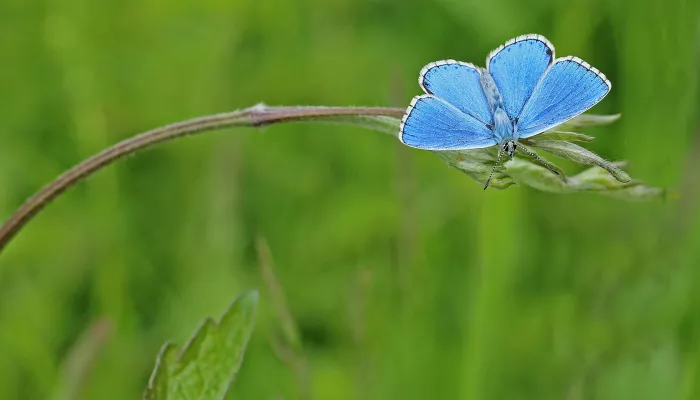It’s not too late to save UK nature but we must act now – that is the conclusion from a coalition of more than 50 leading wildlife and research organisations behind the State of Nature 2016 report.
Here in Kent there are significant concerns for wildlife. According to Kent Wildlife Trust the long term decline in biodiversity has not been halted and, although there are some success stories, the overall picture is worrying.
Five species of butterfly have disappeared from Kent in the past 50 years, one – the pearl-bordered fritillary – as recently as 2002. Three more butterfly species are on the brink of extinction from the county, with just a few small colonies left.
Since 1980 the rate of plant extinctions in Kent has accelerated with an average of four species per decade vanishing from Kent. Many species continue to suffer population declines, particularly, birds and wildflowers that are associated with farmland, and wetland plants and birds.
Our knowledge of the marine environment is far from complete, but recent local extinctions are being recorded. The county’s once abundant native oyster beds have been reduced to small pockets and farmed stocks, and there are clear declines in commercial fish species.
Loss of habitat and changes in land use are major causes of declines in Kent. If habitats are fragmented and isolated it is difficult for species to recolonize even when sites are brought into sympathetic management. It is essential that suitable areas are linked together so that wildlife can spread between them.
Sue Young, Head of Conservation for the Trust, said: “We are working with volunteers to monitor changes in species distribution on our reserves and in the wider landscape. Our Ecology Group Volunteers, led by Paul Tinsley-Marshall, have been busy surveying plants, birds and other wildlife throughout the spring and summer to help us understand how our conservation work is helping to reverse declines.”
Following on from the groundbreaking State of Nature report in 2013, leading professionals from 53 wildlife organisations have pooled expertise and knowledge to present the clearest picture to date of the status of our native species across land and sea.
The report reveals that over half (56%) of UK species studied have declined since 1970, while more than one in ten (1,199 species) of the nearly 8000 species assessed in the UK are under threat of disappearing from our shores altogether.
There are many inspiring examples of conservation action that is helping to turn the tide. From pioneering science that has revealed for the first time the reasons why nature is changing in the UK, to conservation work – such as the reintroductions of the pine marten and large blue butterfly and the restoration of areas of our uplands, meadows and coastal habitats. But more is needed to put nature back where it belongs.
Conservation in action
Targeted conservation action is helping some threatened butterfly species in Kent. There have been major increases of heath fritillary in the Blean Woods Complex, near Canterbury, and this is now the UK’s most important population of heath fritillary.
Reintroductions of the Adonis blue butterfly and silver spotted skipper to Kent Wildlife Trust’s Queendown Warren and Burham Down reserves have been highly successful and we are now seeing these butterflies colonising nearby sites.
A number of previously rare and threatened species are recovering. The creation of new wetland habitats has been a major factor behind increases of birds like great crested grebe, avocet and marsh harrier. Birds such as hobby, buzzard and raven have returned to Kent, showing the effectiveness of protective legislation and the banning of dangerous pesticides.
Leadership for nature
As the UK Government and devolved administrations move forward in the light of the EU Referendum result, there is an opportunity to secure world leading protection for our species and restoration of our nature.
Now is the time to make ambitious decisions and significant investment in nature to ensure year-on-year improvement to the health and protection of the UK’s nature and environment for future generations.
The State of Nature 2016 UK report was launched by Sir David Attenborough and UK conservation and research organisations at the Royal Society in London on September 14, while separate events were held in Edinburgh, Cardiff and Belfast.
Sir David Attenborough said: “The natural world is in serious trouble and it needs our help as never before. The rallying call issued after the State of Nature report in 2013 has promoted exciting and innovative conservation projects.
"Landscapes are being restored, special places defended, struggling species being saved and brought back. But we need to build significantly on this progress if we are to provide a bright future for nature and for people. The future of nature is under threat and we must work together; Governments, conservationists, businesses and individuals, to help it.
"Millions of people in the UK care very passionately about nature and the environment and I believe that we can work together to turn around the fortunes of wildlife.”
In order to reduce the impact we are having on our wildlife, and to help struggling species, we needed to understand what’s causing these declines. Using evidence from the last 50 years, experts have identified that significant and ongoing changes in agricultural practices are having the single biggest impact on nature.
The widespread decline of nature in the UK remains a serious problem to this day. For the first time scientists have uncovered how wildlife has fared in recent years. The report reveals that since 2002 more than half (53%) of UK species studied have declined, and there is little evidence to suggest that the rate of loss is slowing down.

